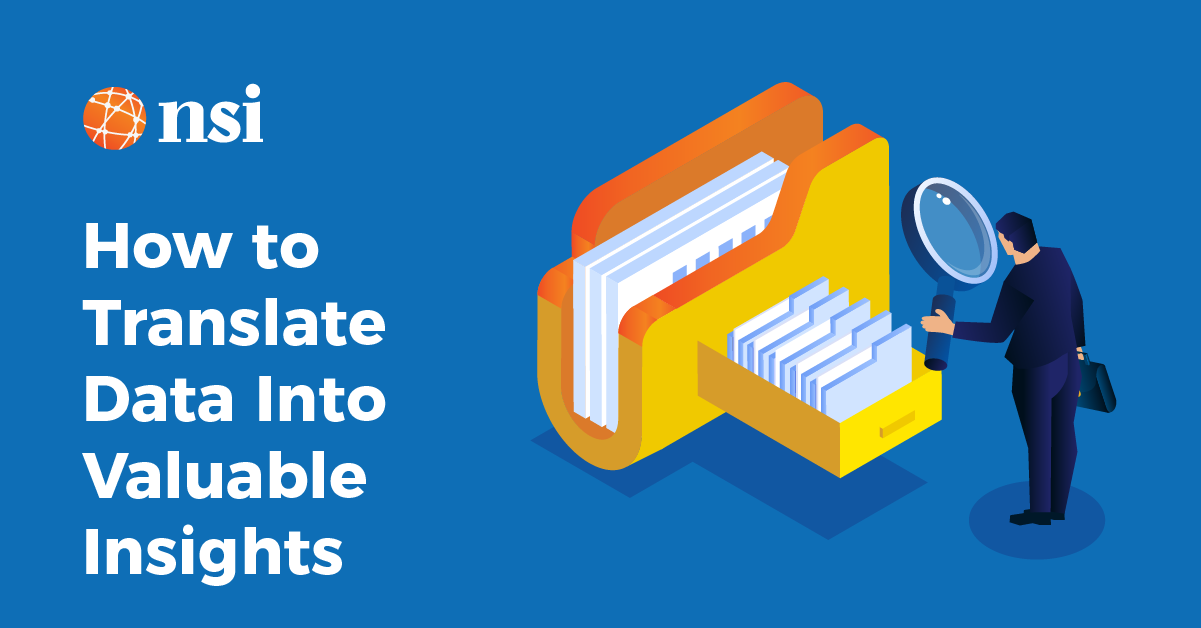
While 74% of businesses say they want to be data-driven, only 29% connect their analytics to action. Collecting data is one thing, but using it to create actionable insights is the only way to move forward with data-driven plans.
Actionable insights are any understanding you can gain about your business that you can use to achieve a certain outcome. Turning raw data from your analytics tools into actionable insights does exactly what your company needs; it drives action that leads to tangible results.
What can you do with the mountains of data you’ve collected?
- Use it to make informed decisions
- Use it to create successful marketing and business strategies
- Use it to improve customer experiences
- Use it to drive positive change within your business
We want to offer you some proven strategies to guide you in the skills and mindsets necessary to turn data into actionable insights.
Determine Your Main Goals
Successful businesses have a culture of innovation to keep in tune with what their clients want or need. Keeping ahead in today's ever-changing world requires translating data into actionable insights.
However, before you start tracking data, it’s necessary to define your goals.
There’s no reason to track data that isn’t valuable. While vanity metrics may look impressive, collecting them can be a waste of time if they serve no function. Starting out knowing your goals can allow you to work smarter rather than harder.
When analytics are closely related to your business goals, you’re more likely to be able to use them to drive action.
For example, is your goal to make more sales? Address poor reviews on social media? Break into a new market? Attract long term clients?
Ask the Question “What Does It Mean?” and Create Your Hypothesis
Asking the right questions about your statistics can help guide your actions towards the desired end results:
- What does the statistic mean?
- What’s behind the statistic?
- Is that statistic good for business?
- What trends do you notice?
- Are trends changing for better or worse?
- What patterns do you see and what do they correlate to?
- What anomalies do you see, and are they meaningful?
It can be tempting to make excuses for the statistics that you collect. However, know that the statistics you see provide a true picture, whether you like what you see or not.
Wise companies alter their views to fit the facts rather than alter their facts to fit their views.
Once you have seen what the statistics have to tell you, it’s time to create a hypothesis to help you analyze the data. A hypothesis that seeks to explain the reasons behind trends can help drive your action.
Creating Your Hypothesis and Action Plan
Here’s a fill-in-the-blank template to help you analyze data, create a hypothesis, and form an action plan:
- The data shows that [insert data statement here].
- I believe the reason for this is that [insert hypothesis here].
- If this is correct, we should [insert action plan here].
For example, the data shows that you had a huge drop in business starting a month ago. You believe that the reason for this is that a competing business opened a month ago. If this is correct, you could make an action plan to try to entice your old customers back and engage in more advertising for new customers.
Use Context to Explain Your Numbers
The main goal of analyzing your data is not to determine key performance indicators (KPIs) or determine performance but to try to understand why the numbers are what they are.
Data is useless without looking more closely at the context of the statistics and trends you’re seeing. Understanding the context leads to the best decisions related to the numbers.
Here are some questions you can ask to determine the context for the stats your analytics has uncovered:
- Who: Who is creating the trend? Who do these stats affect? Who will benefit from these trends?
- What: What do these numbers mean? What significance do these numbers have? What effect will these numbers have on business? What potential problem do these stats reveal?
- Where: Where did the event happen? Where can we improve? Where can we learn more about these trends?
- When: When did the event happen? When was the last stats update? When should we react to these analytics?
- Why: Why did the event happen? Why should we care? Why is it important?
Here’s an example of how to use these questions for context. You realize that you’re selling a lot a specific product to high school students. The product is especially popular at your store across the street from a high school and started when the fall semester began. Perhaps the popularity is a high school trend, and you should cater more to their interest in this type of product at this store location.
Integrate Data Sources
Pulling together data from multiple sources can help you see the big picture better, allowing you to make faster and better business decisions. Data from multiple sources can deliver deeper insights.
Ask yourself: What sources can I use to get the data I need to understand how customers are connecting to my products or service?
As an example, if your business engages in e-commerce, you can analyze data from online transactions, online marketing data, reviews, and social marketing platforms to uncover important stats and trends.
Communicating Insights Effectively
Now that you’ve gathered data and formed a hypothesis about why you’re seeing the trends you are, it’s necessary to explain your insights well so that they’re not overlooked or forgotten.
Poor communication prevents essential changes that could reverse negative trends and cause you to fail to capitalize on positive trends.
Your data should tell a meaningful story. Communicating insights effectively requires:
- Presenting more than numbers: Not everyone is a numbers person, so presenting numbers alone can fall on deaf ears.
- Including context: Providing context for the circumstances surrounding the data can help give statistics meaning.
- Using clear visualizations: An estimated 65% of people are visual learners. Thus, visualizations like data-centric tables, graphs, and charts can help explain data in a way that is easy to understand and leaves no doubt concerning interpretation.
- Including hypotheses: Explaining your thoughts on the whys behind the trends can add a layer of understanding or help open up discussions.
- Proposing an action plan: Suggesting an action plan or opening up the floor to discuss a possible action plan can make insights practical and help create new goals.
Analyzing and acting on business data insights leads to business success.
Once you begin to understand the trends you see, you can take actions that will keep your clients happy and allow your company to thrive.
However, translating data into actionable insights first involves investing in the right data analytics tools to capture the data. Many of the user-friendly, new-generation data analytics tools allow you to import data from external sources, analyze data, and create visualizations to make it easier to see patterns and trends.
NSI can help you find the right analytics tools for your goals to help improve your business operations and outcomes with IT. We can also show you how to use these tools in ways that are meaningful for actionable results.
Contact us with any question you might have about uncovering analytics that will work for you. You can also book a meeting to talk with Tom.








